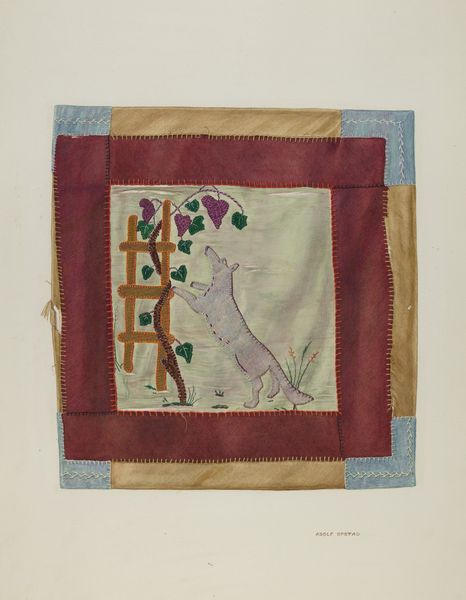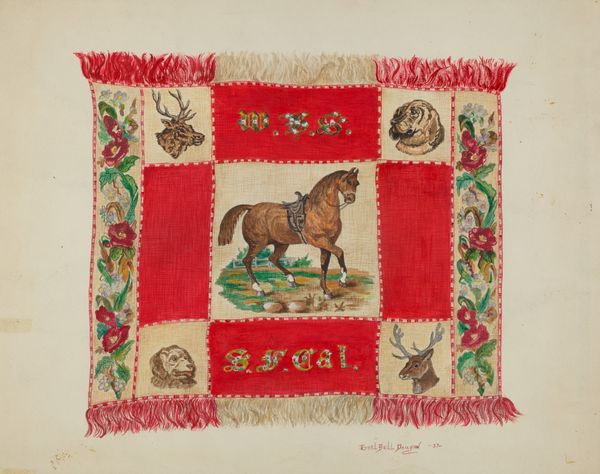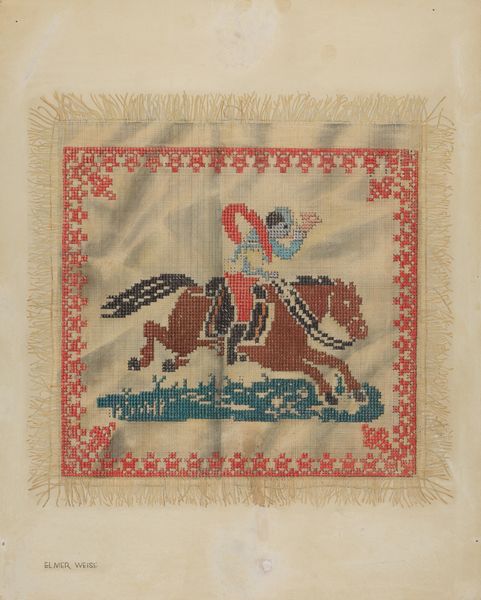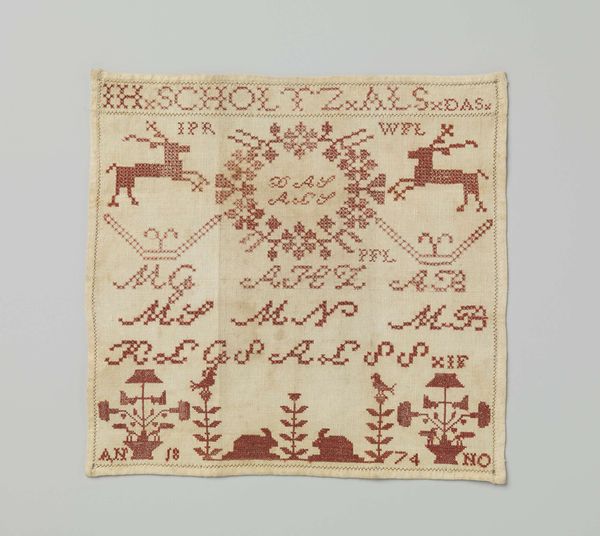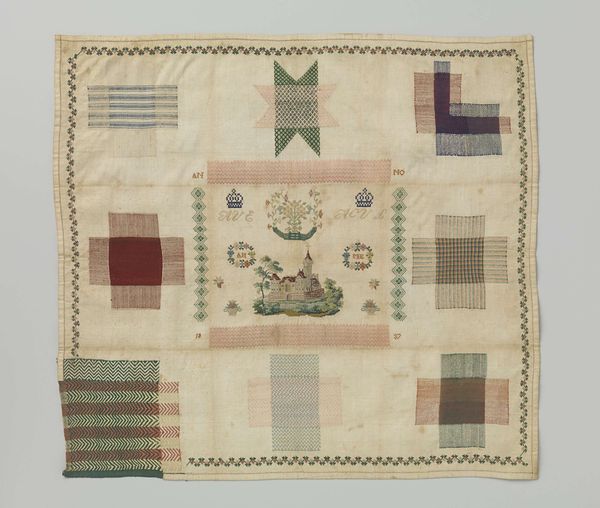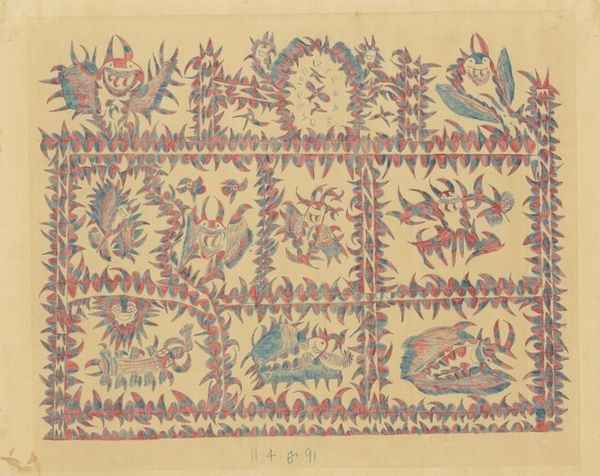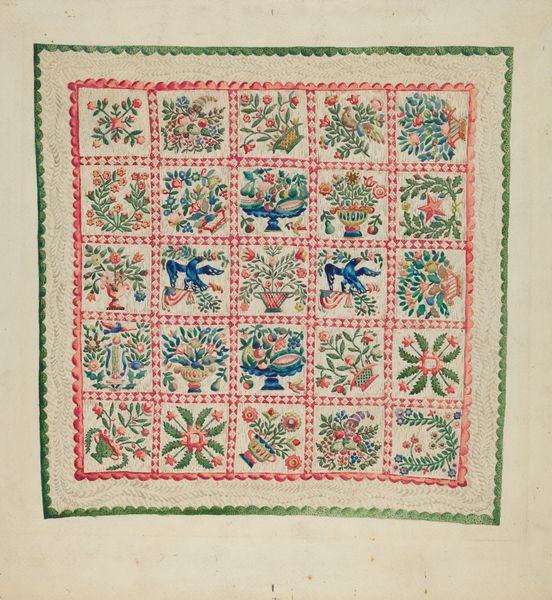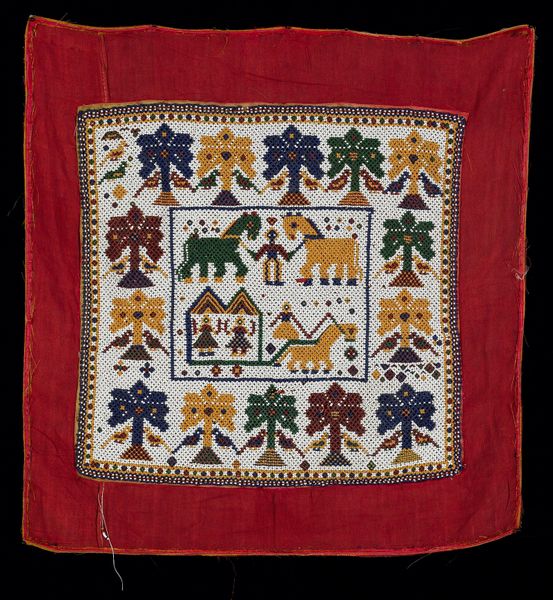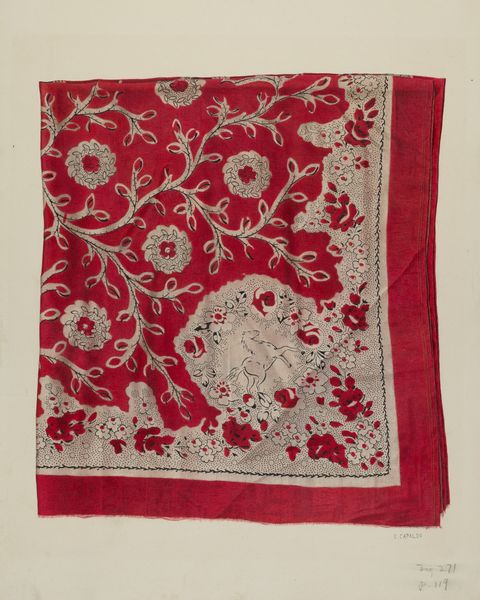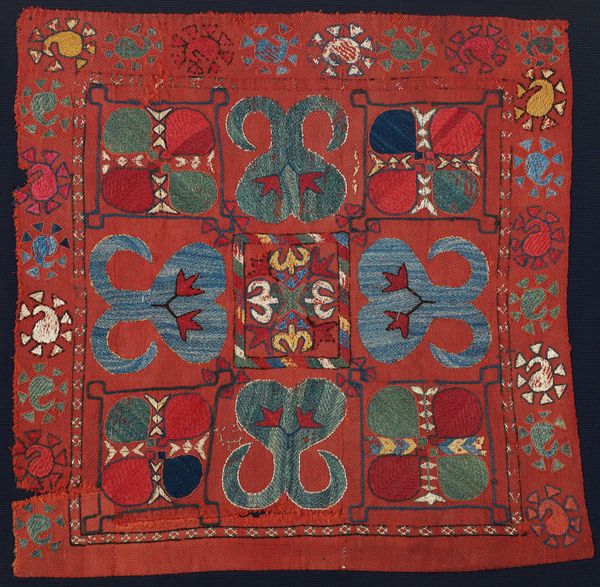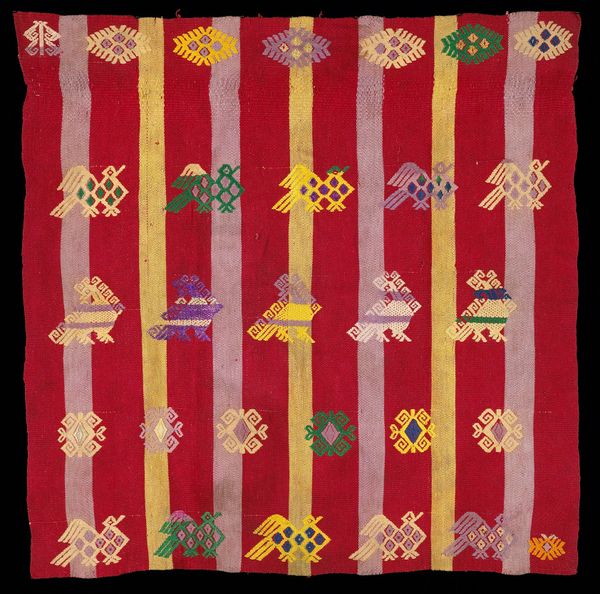
fibre-art, weaving, textile
#
fibre-art
#
weaving
#
landscape
#
textile
#
figuration
Dimensions: overall: 53.9 x 39.6 cm (21 1/4 x 15 9/16 in.)
Copyright: National Gallery of Art: CC0 1.0
Curator: Here we have Adolph Opstad's "Applique Coverlet (Detail)," created around 1941. It's primarily fibre art, employing weaving and textile techniques to create a figurative landscape. Editor: My immediate thought is one of quiet solitude. The muted colours, the stillness of the larger deer... it feels like a hushed moment in nature. Curator: Indeed. Opstad uses the deer as potent symbols. Throughout history, the stag often represents masculine power, nobility, but also vulnerability— a hunted creature, representing the intersection of strength and fragility that men of colour must negotiate in social dynamics. The doe in contrast evokes themes of care and watchfulness. This pairing speaks volumes to familial bonds within marginalized communities. Editor: It’s interesting how the trees are rendered almost like naive representations of evergreens, pointing to ideas around perseverance, survival, endurance—concepts historically associated with rural and working class survival strategies, especially as experienced by individuals of Scandinavian heritage such as Opstad himself. It reframes conventional notions of natural beauty into themes relevant to immigration experiences and identity formation. Curator: Precisely. Opstad infuses personal narrative with ancestral memories in its rendering, inviting viewers to see a continuous legacy embedded in its fibre art; they are visual carriers of cultural history. This intimate artwork fosters dialogue and creates an intersectional narrative rooted in textile. Editor: The very act of crafting this coverlet becomes an act of defiance against the historical forces of marginalization—an active reclamation through tender artistry! Its impact lies not only with representing shared history, but re-writing and reinforcing cultural survival for subsequent generations. Curator: I see a lasting, visual symbol of resistance and kinship. Editor: And, in quiet solidarity, these woven strands become unbreakable threads across time and experience.
Comments
No comments
Be the first to comment and join the conversation on the ultimate creative platform.

